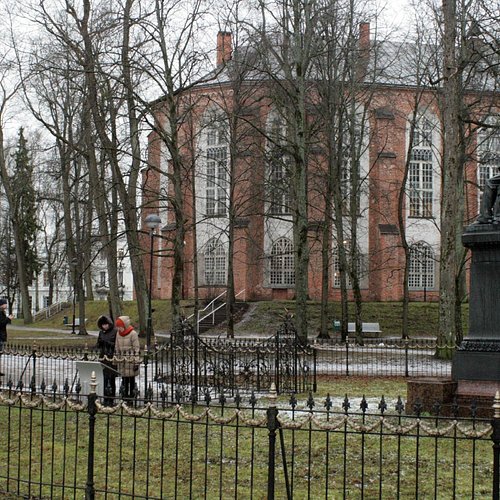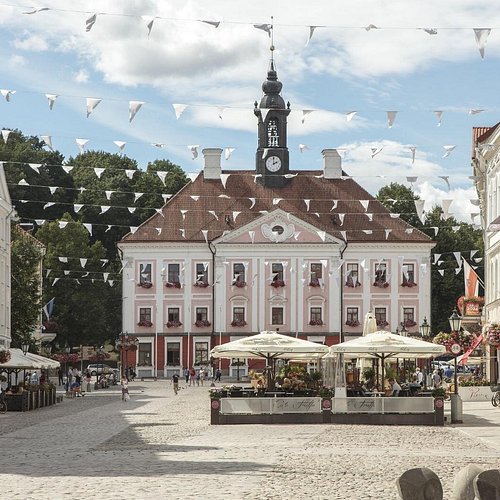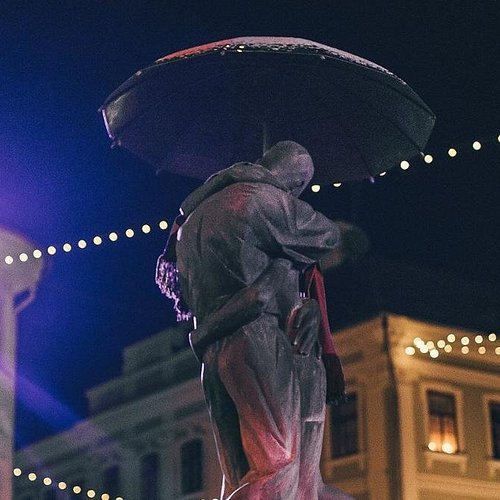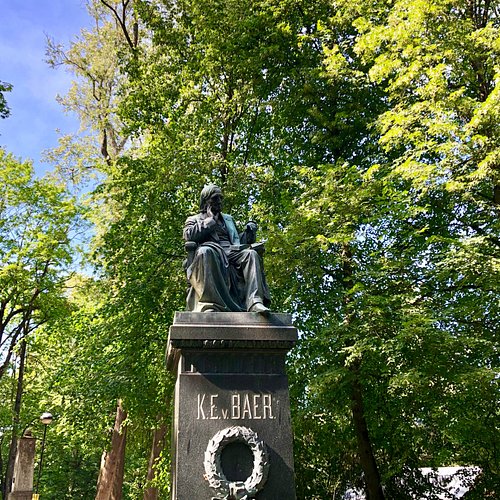What to do and see in Tartu, Tartu County: The Best Points of Interest & Landmarks
Tartu (Estonian pronunciation: [ˈtɑrtˑu], South Estonian: Tarto) is the second largest city of Estonia, after Estonia's political and financial capital Tallinn.
Restaurants in Tartu
1. Tartu Cathedral
2. Tartu Town Hall Square
Overall Ratings
4.5 based on 223 reviews
Tartu Town Hall Square is the trapeze-shaped central square of Tartu, surrounded by classical buildings. The current town hall is the third building that has been erected to that spot. In the 18th century, the square was the location of the most important market in the city – der Grosse Markt, or the Great Market. Since 1998, it has been adorned by the fountain known as the Kissing Students. Every day, bells ring out from the tower of the Town Hall; its 18 bells were manufactured in the bell foundry in Karlsruhe, Germany, and 16 bells were cast for the 15th anniversary of bell-ringing at the Royal Eijsbouts Belfry in the Netherlands. A yellow National Geographic window erected in the Town Hall Square represents Tartu as one of the places in Southern Estonia worth discovering.
Reviewed By grahamc894 - Dunton Green, United Kingdom
The Town Hall Square or Raekoja Plats is the place to go to appreciate the history of Tartu, Estonia's second city and home to its famous University. Tartu like Tallinn has an OId Town and a modern one, with Town Hall Square being the heart and soul of the Old Town. Buildings such as The Leaning House (1793 ) and the Kissing Students statue adorn this picturesque area which leads you into the University campus. The Town Hall ( post 1775 ) itself houses the Information Centre ( side entrance ) where you should pick up the pamphlet 'Strolls in Tartu' which will give you an excellent insight into this classicist city's history and you can follow all or parts of its recommended routes. Highly recommended and enjoy.
3. 'The Kissing Students' sculpture and fountain
Overall Ratings
4.5 based on 306 reviews
The Kissing Students' sculpture and fountain is one of the most recognised symbols of Tartu. A fountain has stood in the same place since 1948, when newlyweds and their guests would visit it for luck, and people would also take a dip in it. The sculpture was created by Mati Karmin and completed in 1998. Since 2006 the fountain has been surrounded by tiles bearing the names of Tartu's sister cities: Bærum, Deventer, Ferrara, Fredriksberg, Hafnarfjorður, Hameenlinna, Kaunas, Luneburg, Pihkva, Riia, Salisbury, Tampere, Turu, Uppsala, Veszprem and Zutphen. They are situated in the direction that the cities lie from Tartu, marking the distances.
Reviewed By PBTravelstheWorld - Woodinville, United States
Fun statue of a young couple in this University town. Right in the middle of the pedestrian district, it is a quick stop as you stroll through the town.
4. Monument to Peeter Pold
Overall Ratings
4.5 based on 9 reviews
The monument to Peeter Põld (1878-1930), the first Minister of Education of the Republic of Estonia and the founder of the national university, was opened in front of the Ministry of Education and Research on 1 December 2008. The authors of the monument are sculptor Ekke Väli and architect Ain Rööpson.
5. Tagurpidi Maja
Overall Ratings
4.5 based on 69 reviews
Reviewed By AnureetR - London, United Kingdom
Yes besides the many Instagram likes you’ll get, this place is also a lot of fun to explore. The attention to detail, even the small ones is amazing and would definitely recommend a day trip to Tartu to see this. Would recommend going in the morning when it opens to avoid crowds in your photos inside the house.
6. Model of Kivisild
Overall Ratings
4.0 based on 38 reviews
The first stone bridge to be constructed in the Baltic States was erected in the 18th century at one end of the Town Hall Square in Tartu, with two triumphal arches and a raisable mid-section. Dedicated to Russian empress Catherine II, it was opened to traffic in 1784. The bridge was destroyed during World War II. All that remains to admire is the 2004 model of the bridge (created by Tiiu Kirsipuu).
Reviewed By EdgarMets
Or is it? Check closely, the modern bridge is built on the columns of the old bridge witch was destroyed during ww2. There is a small model of the old bridge.
7. Tartu Kuradisild
Overall Ratings
4.0 based on 39 reviews
Tartu Kuradisild was built in 1913 to celebrate the 300th jubilee of the Romanov Dynasty (Russian tsars) and dedicated to the memory of Emperor Alexander I.
8. Struve’s Geodetic Arch
Overall Ratings
4.0 based on 39 reviews
The geodetic arch of FGW Struve, an astronomer from the University of Tartu, which is a 2820 km meridian section that reaches from Northern Norway to the Black Sea, was entered into the list of UNESCO World Heritage on 15 July 2005.
9. Monument to Karl Ernst Von Baer
Overall Ratings
4.0 based on 30 reviews
Karl Ernst von Baer was a biologist, the founder of descriptive and comparative embryology and an academician of the St Petersburg Academy of Sciences. He studied medicine in Tartu from 1810 to 1811 and obtained the degree of doctor of medicine here. He was a professor of zoology and anatomy in Konigsberg from 1817. He studied anthropology, geography and ichthyology during his time in St Petersburg. He spent the last years of his life (1867-1876) in Tartu where he wrote his 3-volume collection of articles and speeches and participated in the activities of the Estonian Naturalists Society and was elected its president in 1869. The statue of Karl Ernst von Baer was completed in 1886, its author is M Opeku.
10. Monument to Gustav II Adolf
Overall Ratings
4.0 based on 30 reviews
The monument to Gustav II Adolf (1594-1632) was reopened in 1992. Its author is Elisabeth Tebelius-Myren. A monument to King of Sweden Gustav II Adolf who founded the University of Tartu stood in the yard of the university's main building from 1928 to 1950. The author of the sculpture was Otto Strandman. Soviet occupation authorities removed the monument on 15 May 1950. The monument was reopened in 1992 with the help of Swedish people.










